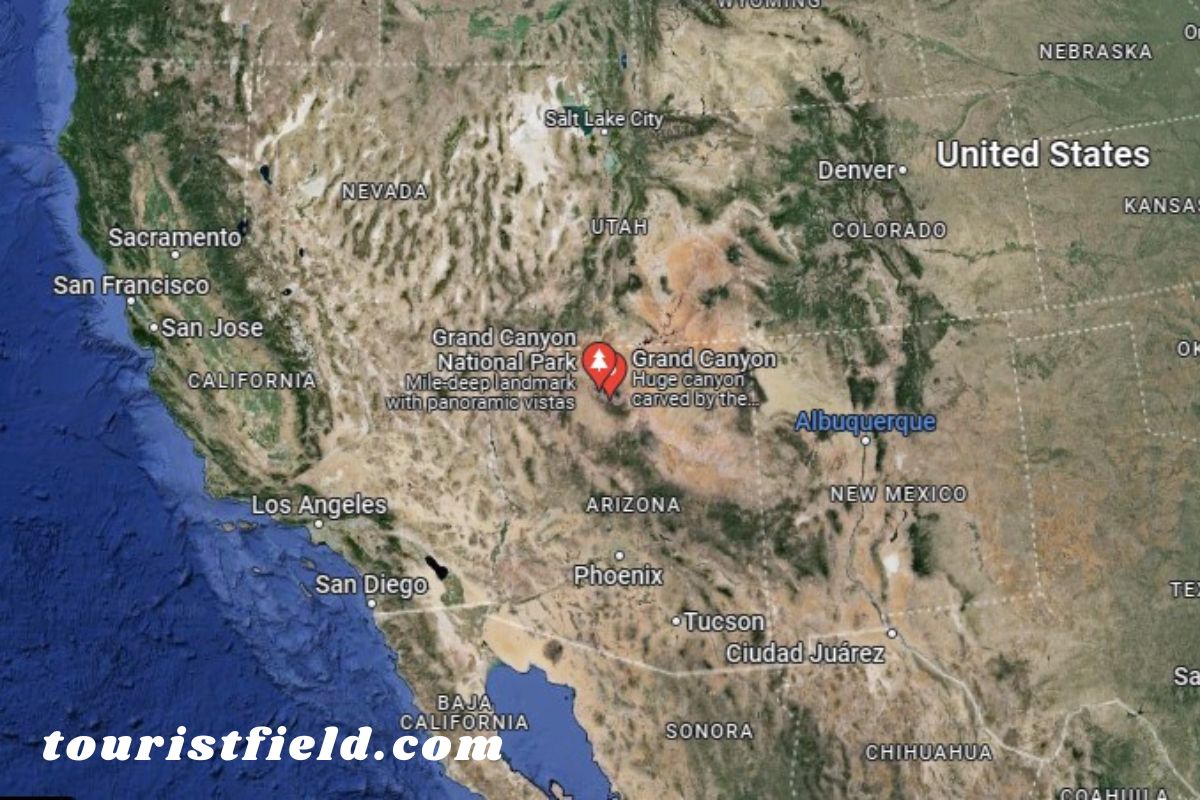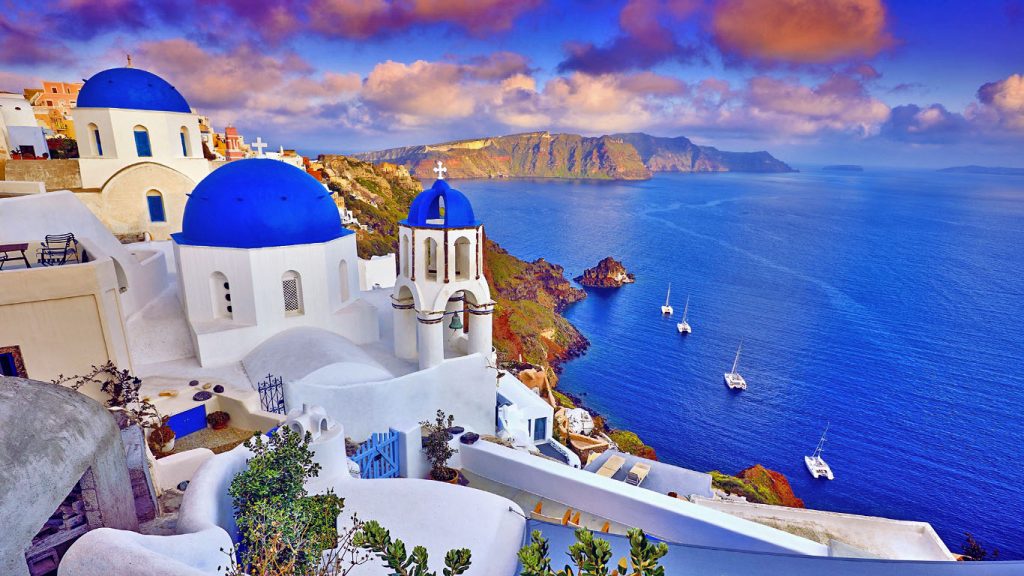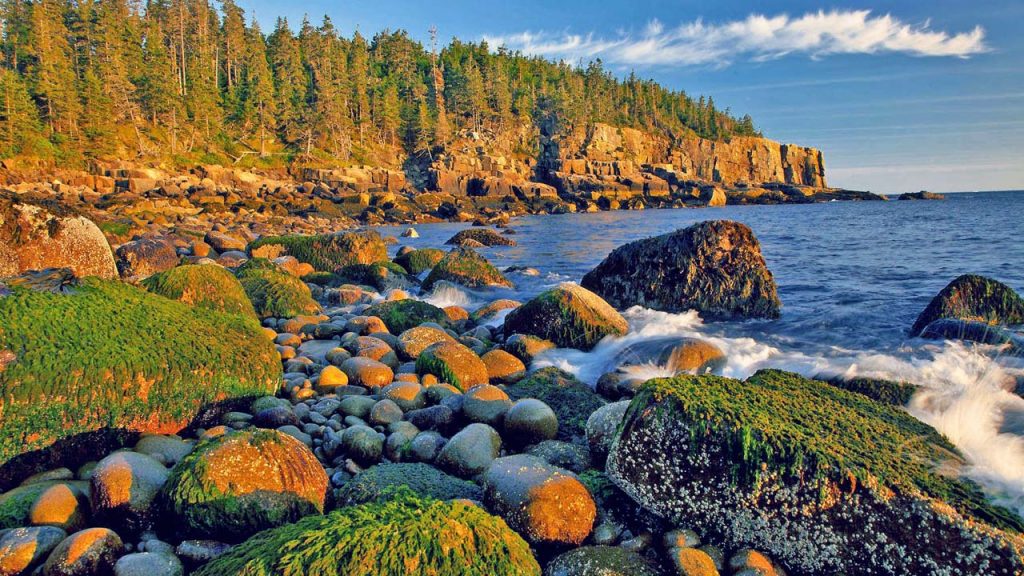Where is the Grand Canyon Located on a Map: Exploring the Wonders of Nature
Introduction
Welcome to the majestic world of the Grand Canyon, a geological wonder that captivates millions of visitors annually. In this comprehensive guide, we’ll delve into the intricate details of where the Grand Canyon is located on a map, exploring its vast expanse, unique features, and wonders that make it a must-see destination.
Uncovering the geographic location of the Grand Canyon
Where is the Grand Canyon Located on a Map?
The Grand Canyon is located in the northwestern part of Arizona, USA. Located within the Grand Canyon National Park, it spans 277 miles, offering a breathtaking panorama of rugged landscapes and vibrant colors.
Embarking on a journey to uncover the geography of the Grand Canyon opens up a world of awe-inspiring wonder. The Grand Canyon, located in the northwestern part of Arizona, USA, stands as a testament to the earth’s geological brilliance.
Spanning an impressive 277 miles within Grand Canyon National Park, this natural wonder is a sight to behold. As we delve into the details of its geographic coordinates, we find that it stretches from the Colorado River in the west to the Little Colorado River in the east. The exact location of the Grand Canyon can be traced to approximately 36 degrees north latitude and 112 degrees west longitude.
Located within the Colorado Plateau, the Grand Canyon is a magnificent result of millions of years of geological processes. The power of the Colorado River’s erosion, rise, and constant flow has sculpted this breathtaking landscape. Layers of rock formations reveal Earth’s history, with each layer telling a unique story of environmental change over time.
As you stand on the rim and gaze at the vastness of the canyon, you will be amazed by the complexity of its terrain. The South Rim, more accessible to visitors, offers panoramic views and a glimpse of the canyon’s geologic past. On the other hand, the North Rim, although less frequently visited, boasts a different view, showcasing the varied topography of the canyon.
The geological wonders surrounding the Grand Canyon
Exploring the geological wonders that surround the Grand Canyon uncovers a fascinating narrative of the earth’s dynamic forces and millennia-long transformation. The Grand Canyon is not just a location on a map; It is a living proof of the relentless force of erosion, degradation, and geological uplift.
Layered Rock Formations: Nature’s Masterpieces
One of the most interesting features of the Grand Canyon is the complex layers of its rock formations. As sunlight dances on the canyon walls, these layers become a chronological record of Earth’s history. Each layer reveals a different chapter, containing rocks dating back more than a billion years, providing geologists and enthusiasts alike with a visual timeline of the planet’s evolution.
The powerful sculpture of the Colorado River
The heart of the Grand Canyon is the mighty Colorado River. Over millions of years, this relentless force has carved its way through the rock, shaping the canyon’s deep, winding channels. The river, like an artist’s brush, paints the canyon in mesmerizing curves, revealing the delicate balance between the forces of nature and time.
Multicolored Canyon Walls: Nature’s Palette
The canyon walls display a breathtaking palette of colors, from rich reds and oranges to subtle purples and blues. These colors are the result of different minerals present in the rock layer, creating a visual scene that changes with the angle of the sun. As the day progresses, the canyon transforms into a canvas of ever-changing shadows, providing a unique and dynamic viewing experience.
Sedimentary Rocks: Geological Archives
The rock formations of the Grand Canyon are composed mainly of sedimentary rocks, with each layer representing a specific era in Earth’s history. Fossils embedded in these rocks provide a glimpse of ancient ecosystems, allowing scientists to reconstruct the flora and fauna that once inhabited the region. It is a geological archive that tells the story of life on Earth.
Structural features: faults and folds
Beyond its layered beauty, the Grand Canyon exhibits significant structural features such as faults and folds. These complex patterns highlight the tectonic forces that shape the landscape. Exploring these geologic nuances provides a deeper understanding of the complex processes that made the canyon the awe-inspiring spectacle we see today.
In essence, the geological wonders that surround the Grand Canyon are testaments to Earth’s transformative power. As you stand on the rim looking down into the canyon’s depths, you’re not just witnessing a breathtaking view; You are witnessing the ongoing story of Earth’s geological history, carved into every nook and cranny of this extraordinary natural wonder.
Topographic diversity: from plateaus to canyons
Immerse yourself in the topographic diversity of the Grand Canyon, from high plateaus to deep canyons. Understand how the region’s elevation changes, contributing to its unique ecological niche and stunning scenery.
Diving into the topographic diversity of the Grand Canyon reveals a landscape that transcends the ordinary, offering a visual feast of plateaus, mesas, and deep canyons. The Grand Canyon is not just a geographic location; It is a masterpiece of geological complexity that showcases the Earth’s diverse and dynamic features.
Elevated Plateau: Base of the canyon
At the center of the Grand Canyon’s topography is the elevated plateau that serves as the base of this natural wonder. The Kaibab Plateau, the North Rim, and other high elevations contribute to the grandeur of the canyon, creating a dramatic contrast with the lower terrain. These plateaus offer expansive views, allowing visitors to marvel at the vastness of the canyon from above.
Mesas: Flat-topped landforms
Scattered throughout the Grand Canyon are mesas – flat-topped landforms that punctuate the terrain. These geological features add an extra layer of diversity, creating a dynamic visual landscape. The mesas stand as evidence of the complex processes of erosion and deposition that have shaped the region over millions of years.
Canyons and Gorges: Sculptures of Nature
Of course, the most iconic elements of the Grand Canyon are the deep gorges and canyons that traverse the landscape. Carved by the mighty Colorado River and other tributaries, these canyons create a labyrinthine network that invites exploration. Each bend reveals a new perspective, showcasing the canyon’s depth and complexity.
Elevation Change: A Vertical Journey
The Grand Canyon is a study in elevation variation, from the high plateau to the canyon floor. This diversity contributes to the diverse ecosystems found within the canyon, creating niches for unique plant and animal life. As visitors descend into the depths, they experience a vertical journey through different ecological zones.
Grand Canyon Rim-to-Rim: A Hiker’s Challenge
For those looking for adventure, the Grand Canyon offers the Rim-to-Rim Hike—an exhilarating journey that takes hikers from one side of the canyon to the other. This track allows a close encounter with topographic diversity, displaying shifting landscapes and geological wonders that make every step a discovery.
Understanding the topographic diversity of the Grand Canyon goes beyond mere geography. It is an exploration of nature’s craftsmanship, where plateaus, mesas, and canyons combine to create a symphony of landforms. Whether viewed from the rim or experienced through challenging hikes, the topographic richness of the Grand Canyon leaves an indelible mark on those lucky enough to witness their majesty.
Key points of interest on the Grand Canyon map
Take a virtual journey through key points of interest on the Grand Canyon map. Discover iconic locations like the South Rim, North Rim, Havasu Falls, and the Grand Canyon Skywalk, each offering a unique experience.
Embarking on a virtual journey through the Grand Canyon map reveals countless key points of interest, each contributing to the allure and mystery of this natural wonder. As we navigate through its vast expanse, here are some iconic locations that stand out:
South Rim: Majestic Overlook
The South Rim is probably the most visited and easily accessible part of the Grand Canyon. Offering breathtaking panoramic views, it provides a perfect introduction to the grandeur of the canyon. Numerous viewpoints like Mather Point and the Yavapai Observation Station allow visitors to marvel at the canyon’s expansive beauty.
North Rim: Tranquil Wilderness
The North Rim offers a contrasting perspective, characterized by a more secluded and less crowded environment. With its high elevation, it offers a cool climate and unique vantage points like the bright Angel Point. Exploring the North Rim offers a quieter, but equally awe-inspiring, Grand Canyon experience.
Havasu Falls: Oasis in the Desert
Located within the Havasupai Indian Reservation, Havasu Falls is a hidden gem within the Grand Canyon. Known for its turquoise-blue waters and vibrant ambiance, this desert oasis is a must-visit for those looking for a scenic and refreshing nature getaway.
Grand Canyon Skywalk: Thrilling Views
For those looking for an adrenaline rush, the Grand Canyon Skywalk offers a unique experience. Hanging over the edge of the canyon, this glass-bottomed platform offers a breathtaking view of the canyon below and a thrilling perspective.
Phantom Ranch: Retreat at the bottom of the canyon
Located at the bottom of a canyon along the Colorado River, Phantom Ranch is a historic oasis accessible by mule, foot, or raft. Offering rustic accommodations, it offers a unique opportunity to experience the depths of the canyon and immerse yourself in its natural surroundings.
Bright Angel Trail: A hiker’s paradise
Hiking enthusiasts can explore the depths of the Grand Canyon via the Bright Angel Trail. Starting at the South Rim, the trail descends to the canyon floor, offering hikers a closer look at a variety of ecosystems and geological wonders.
Colorado River Rafting: A Water Adventure
For a different perspective, embark on a Colorado River rafting expedition. Flowing through the canyon’s winding passages, you’ll see towering cliffs, hidden waterfalls, and the sheer vastness of the canyon from a river perspective.
Desert View Watchtower: Architectural Marvel
The Desert View Watchtower, located at the eastern end of the South Rim, not only provides panoramic views but also displays impressive architecture. Designed by Mary Colter, the watchtower offers a unique blend of cultural and natural appreciation.
Navigating these key points of interest on the Grand Canyon map allows visitors to create a personalized adventure. Whether seeking serene views, thrilling experiences or cultural insights, each location contributes to the Grand Canyon’s reputation as a diverse and awe-inspiring destination.
Navigating the Grand Canyon: Map Tips for Visitors
For those planning a trip, this section provides invaluable tips for navigating the Grand Canyon. Learn about the best viewpoints, hiking trails, and logistics information for your adventure.
Navigating the Grand Canyon requires a strategic approach to fully appreciate its vastness and beauty. As you plan your adventure through this geological wonder, consider these invaluable map tips for a seamless and enriching experience:
Study the official Grand Canyon map:
Where is the Grand Canyon Located on a Map: Before starting your hike, familiarize yourself with the official Grand Canyon map. Get a copy from the visitor center or the National Park Service website. This detailed map highlights key routes, viewpoints, and information needed for a well-informed search.
Choose your rims wisely:
The Grand Canyon has two primary rims – the South Rim and the North Rim. The South Rim is more accessible and bustling with activity, while the North Rim offers a quieter, more remote experience. Select the rim that aligns with your preference for crowding levels and scenery.
Use the trail map:
Where is the Grand Canyon Located on a Map: With over 15 trails through the canyon, having a trail map is crucial. Find routes that match your fitness level and time constraints Popular trails like Bright Angel and South Kaibab offer stunning views but require different levels of hiking.
Plan your approach:
The Grand Canyon boasts numerous viewpoints, each offering a unique perspective. Plan your itinerary by selecting viewpoints based on sunrise or sunset times for a magical experience. Popular spots like Hopi Point and Lipan Point offer breathtaking panoramas.
Check the weather and road conditions:
The weather in the Grand Canyon can be unpredictable, from scorching heat to chilly evenings. Be aware of weather forecasts and trail conditions, especially during the summer monsoon season. Be prepared with appropriate clothing and gear.
Water and Snack Station:
Hydration is important when exploring the Grand Canyon. Locate water stations along the trail and plan your water consumption accordingly. Additionally, pack energy-boosting snacks to keep you fueled during your journey.
Shuttle Service:
The Grand Canyon offers a shuttle service to facilitate transportation within the park. Use these services to take the stress out of finding parking and move between key points, allowing you to focus on the breathtaking scenery.
Watching Sunrise and Sunset:
The canyon takes on a magical glow at sunrise and sunset. Plan to stay at designated viewpoints during this time for awe-inspiring views. The changing colors and shades create a mesmerizing spectacle that you won’t want to miss.
Join the Ranger Program:
Take advantage of ranger-led programs offered throughout the park. These educational sessions provide insight into the canyon’s geology, wildlife, and cultural history, enhancing your overall understanding and appreciation.
Respect Park Regulations:
To preserve the natural beauty of the Grand Canyon, follow park rules. Stay on designated trails, avoid littering, and respect wildlife. By becoming a responsible visitor, you contribute to the preservation of this remarkable landscape.
Armed with these map tips, your journey through the Grand Canyon promises to be an unforgettable adventure. Whether you’re an experienced hiker or a casual observer, the map becomes your trusted guide, leading you to the wonders that make the Grand Canyon a truly extraordinary destination.
Flora and Fauna: Biodiversity within the canyon
Discover the rich biodiversity within the Grand Canyon. From resilient plant life to elusive wildlife, explore the unique ecosystems that coexist in this arid yet vibrant environment.
Cultural Significance: Tribes and Traditions
Uncover the cultural tapestry woven into the Grand Canyon’s history. Learn about the Native American tribes who hold the canyon sacred and the cultural traditions that add depth to this natural wonder.
Sunset and Stargazing: Magical Moments at the Grand Canyon
Experience the allure of Grand Canyon sunsets and stargazing nights. Discover why these moments are considered among the most magical and memorable aspects of visiting this extraordinary location
Adventure Awaits: Activities off the map
Beyond its geographic location, the Grand Canyon offers numerous adventures. From rafting along the Colorado River to hiking canyon trails, find out how to make your trip an unforgettable experience.
Where is the Grand Canyon Located on a Map: A Historical Perspective
Trace the historical journey of the Grand Canyon, from its formation millions of years ago to the present day. Uncover the scientific discoveries and discoveries that have contributed to our understanding of this natural
Frequently Asked Questions About the Where is the Grand Canyon Located on a Map
Question: How deep is the Grand Canyon?
Explore the depths of the Grand Canyon, reaching 6,093 feet at its deepest point.
Question: Can you see the Grand Canyon from space?
Learn if the Grand Canyon is visible from space and what makes it different.
Question: Are guided tours available at the Grand Canyon?
Discover a variety of guided tours that allow you to explore the Grand Canyon with expert insight.
Question: What is the best time to visit the Grand Canyon?
Plan your trip by understanding the best time to enjoy the beauty of the Grand Canyon.
Question: Are there accommodations within Grand Canyon National Park?
Learn about lodging options within the park, ensuring a comfortable stay during your visit
Question: How long does it take to climb the Grand Canyon?
Get insight into different hiking trails and the time required to navigate them.
Conclusion
As we finish this journey through the wonders of the Grand Canyon, it is clear that this geological masterpiece is not just a location on the map but a testament to the incredible history of the Earth. In essence, understanding the geography of the Grand Canyon involves not only understanding map coordinates but also appreciating the dynamic processes that shaped this natural masterpiece. It is a destination where the history of the world is etched into the very fabric of the canyon walls, inviting visitors to explore, learn, and marvel at nature’s majesty. Whether you’re an avid hiker, nature enthusiast, or history buff, the Grand Canyon offers an experience that transcends boundaries.



